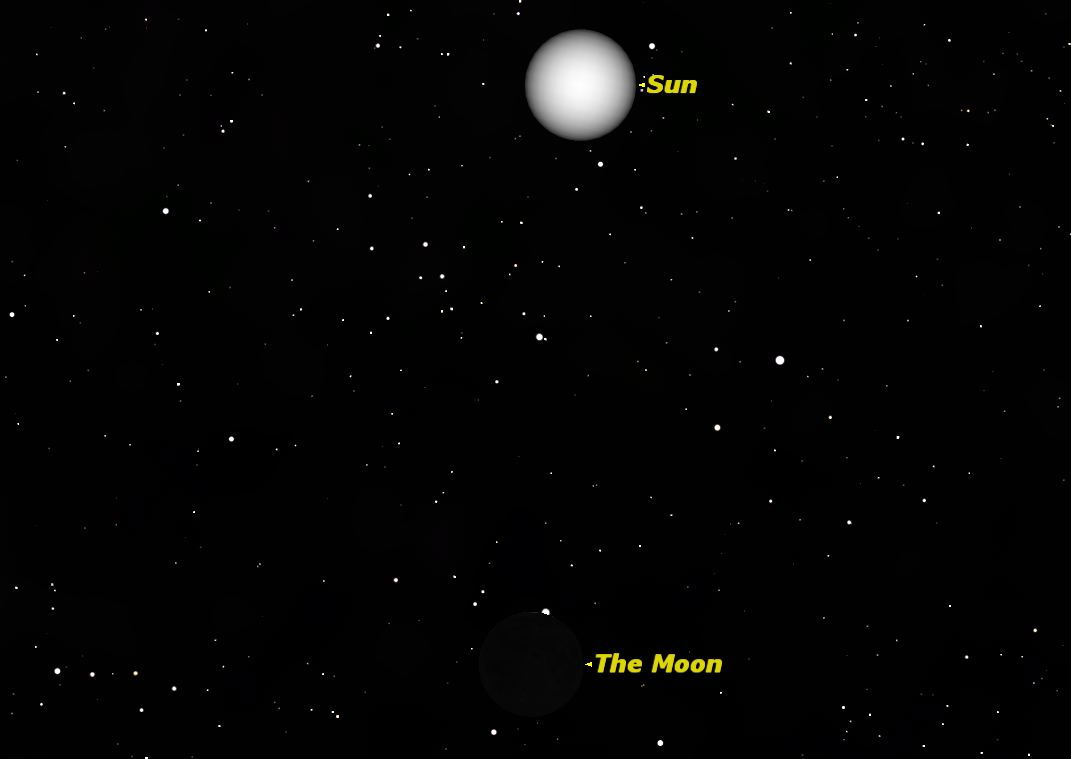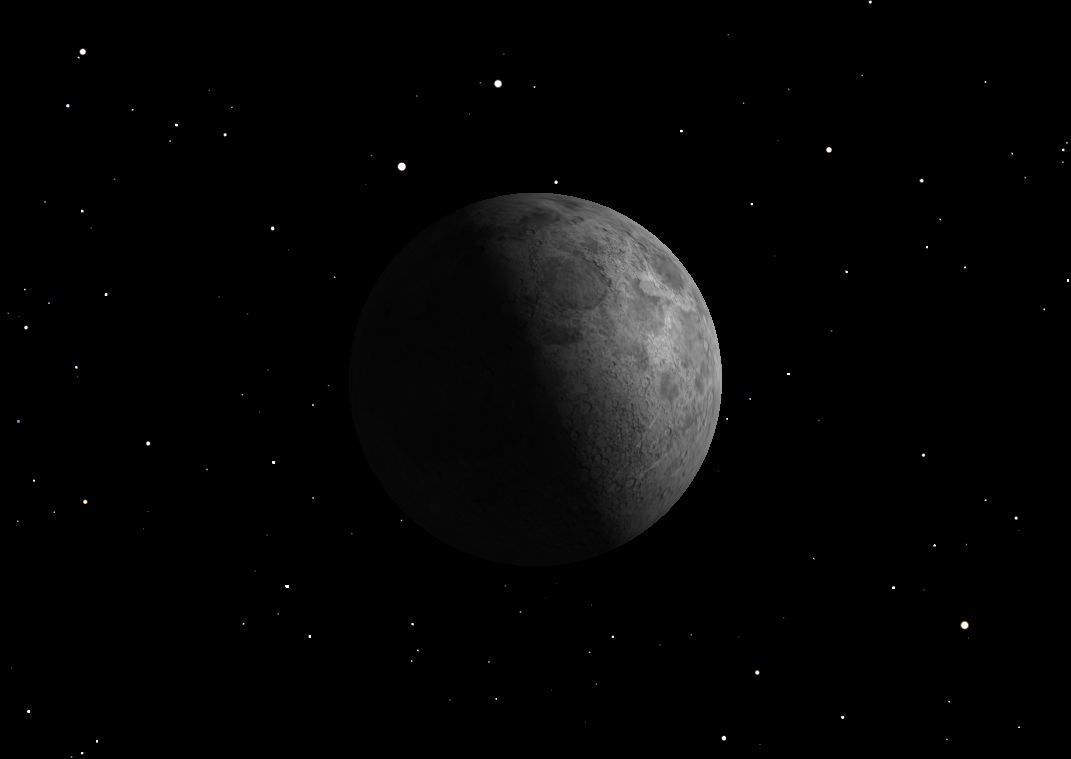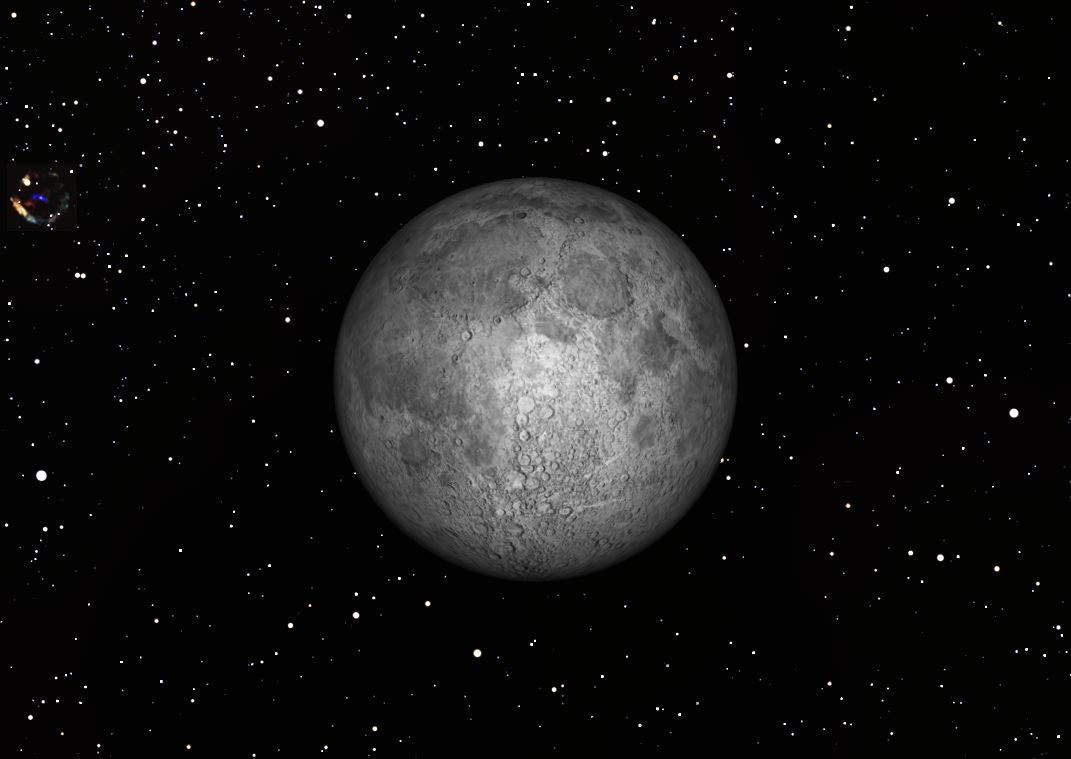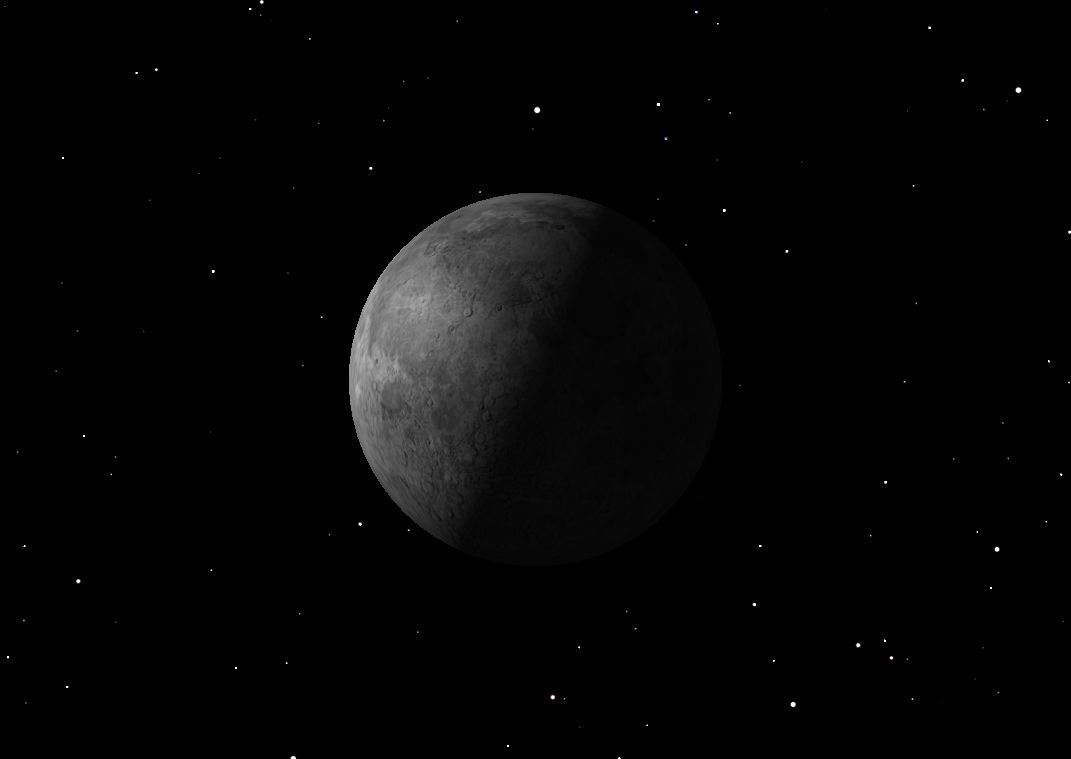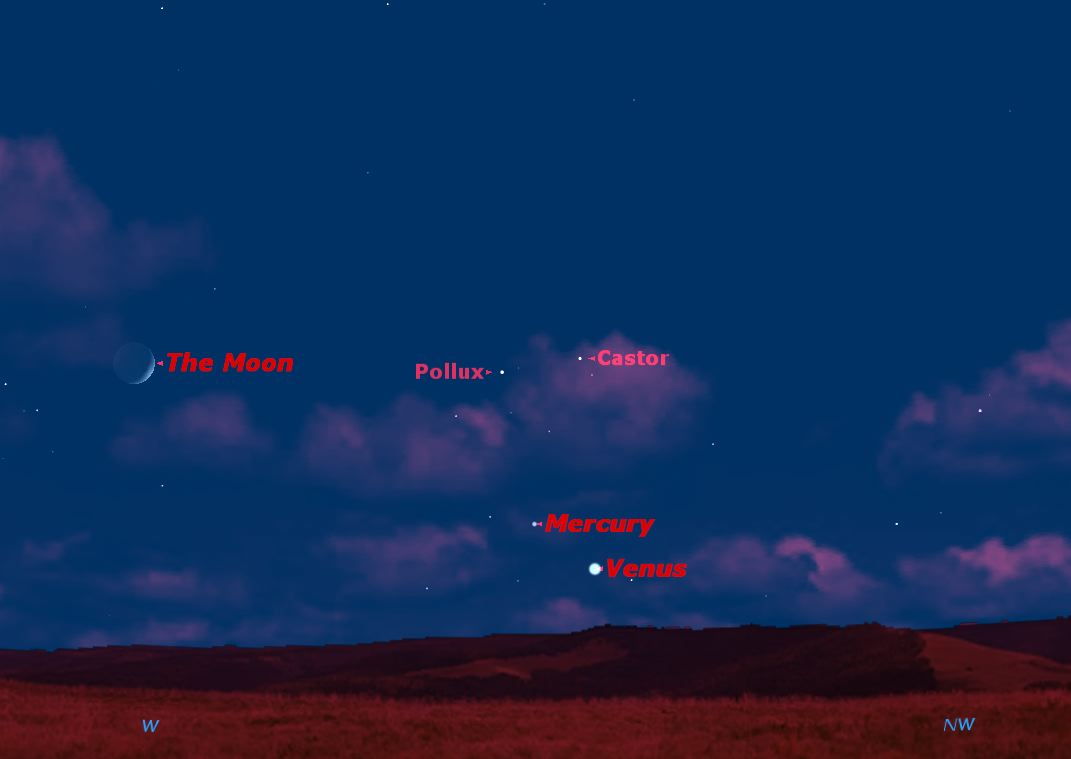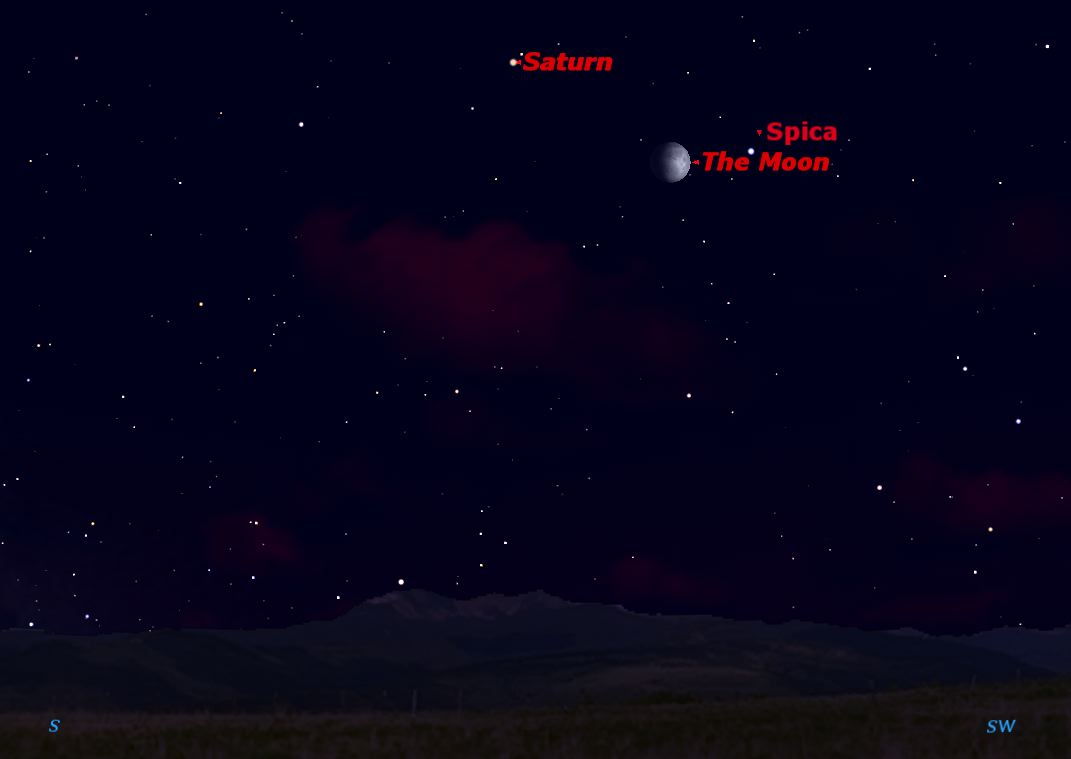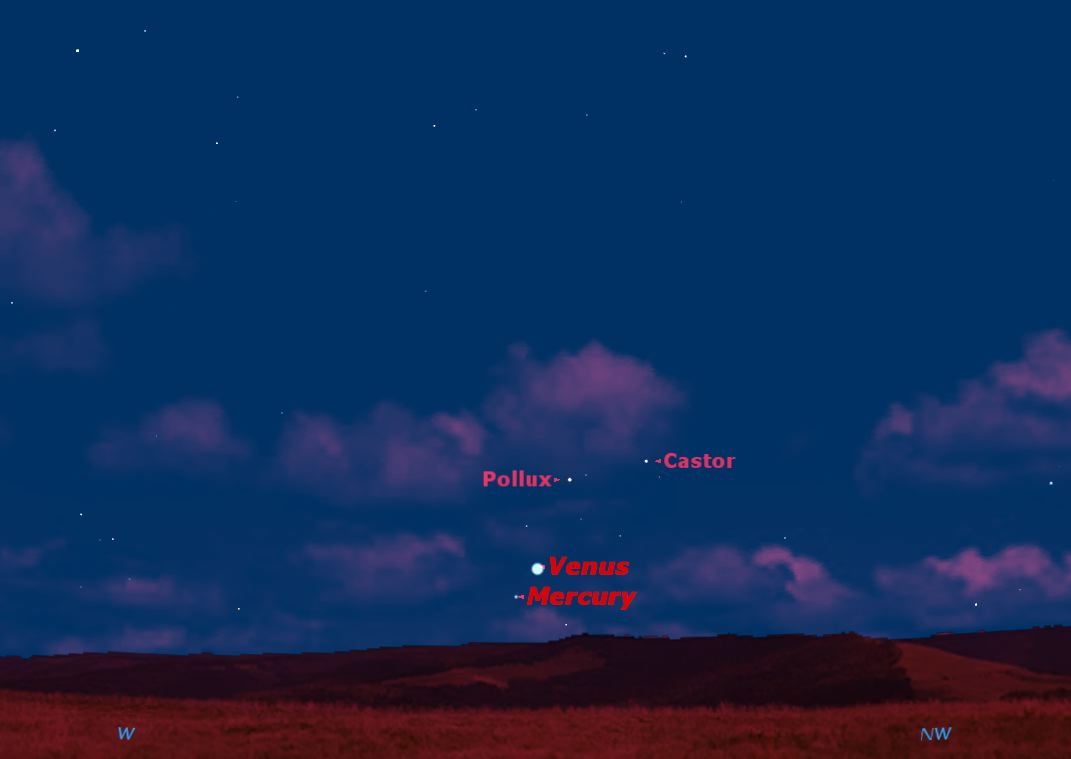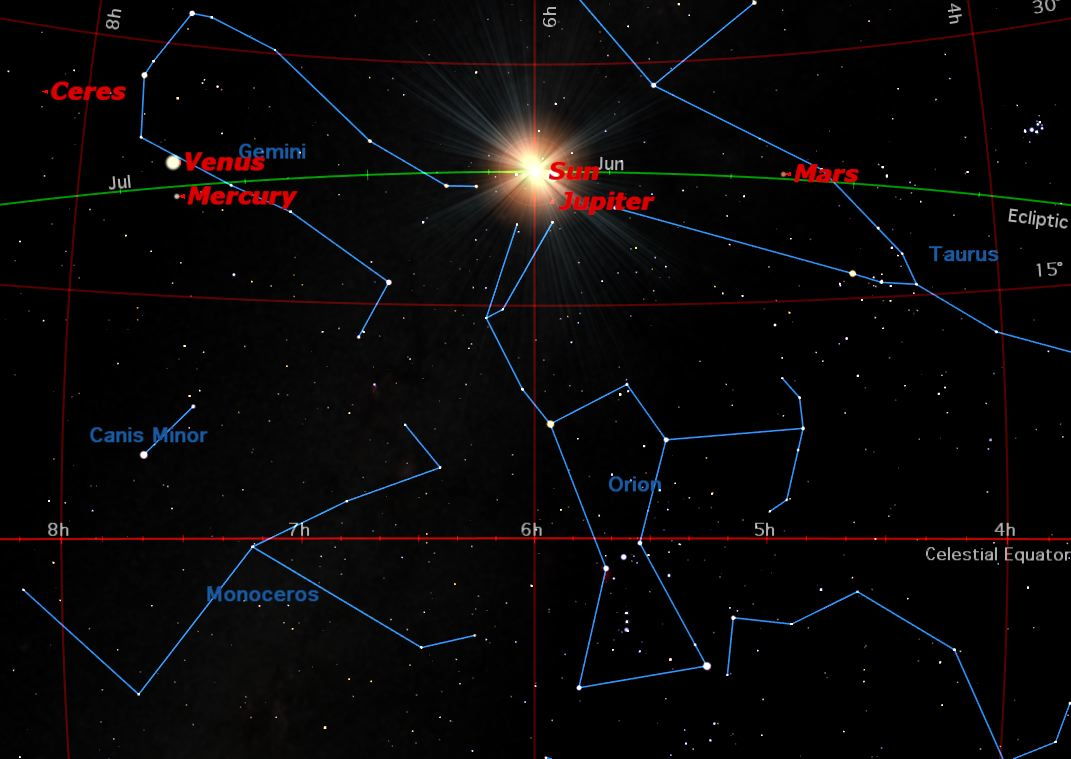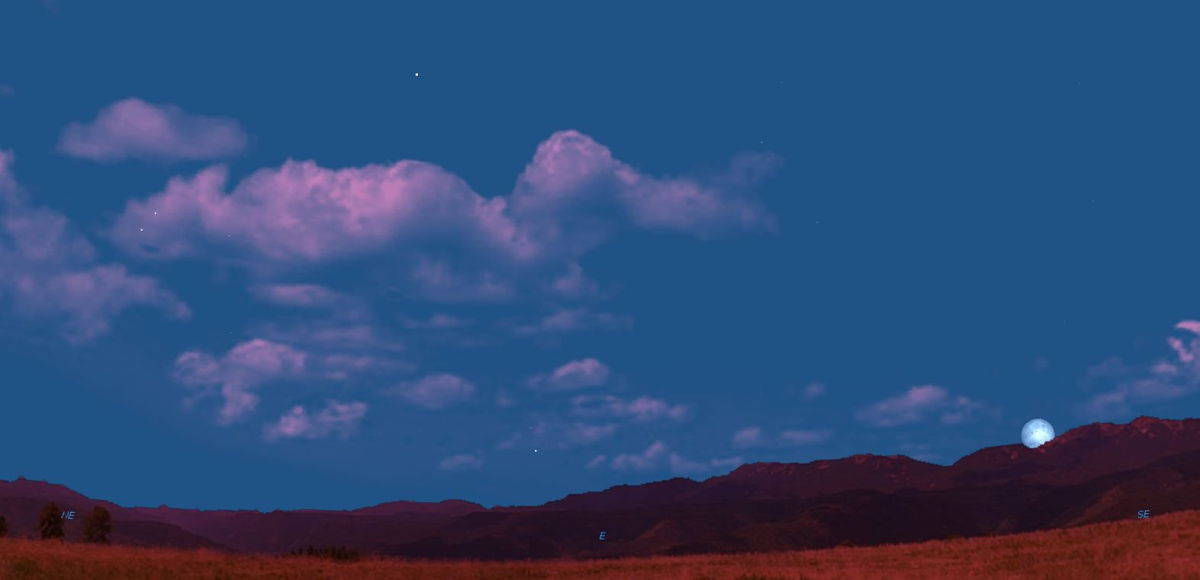Look Up! Stargazing Events for June 2013 (Sky Maps)
New Moon, June 2013
Saturday, June 8, 11:56 a.m. EDT. The moon is not visible on the date of new moon because it is too close to the sun, but can be seen low in the east as a narrow crescent a morning or two before, just before sunrise. It is visible low in the west an evening or two after new moon.
First Quarter Moon, June 2013
Sunday, June 16, 1:24 p.m. EDT. The first quarter moon rises around 1:15 p.m. and sets around 1:30 a.m. It dominates the evening sky.
Full Moon, June 2013
Sunday, June 23, 7:32 a.m. EDT. The full moon of June is usually called the Mead Moon, Strawberry Moon, Rose Moon or Thunder Moon. In Cree it is called Sagipukawipizun, meaning “moon when the leaves come out.” Other names are Honey Moon, Hot Moon, and Planting Moon. In Hindi it is known as Wat Poornima. Its Sinhala (Buddhist) name is Poson. The full moon rises around sunset and sets around sunrise, the only night in the month when the moon is in the sky all night long. The rest of the month, the moon spends at least some time in the daytime sky.
Last Quarter Moon, June 2013
Sunday, June 30, 12:53 a.m. EDT. This is the second last quarter moon this month. It rises around 12:45 a.m. and sets around 2:15 p.m. It is most easily seen just after sunrise in the southern sky.
Mercury at Greatest Elongation East, June 2013
Wednesday, June 12, after sunset. Mercury will be best placed for observation tonight just after sunset. This will be a good apparition in the southern hemisphere, but a poor one in the north because Mercury will be very low in the horizon.
Moon Framed by Saturn and Spica, June 2013
Tuesday, June 18, evening. Saturn, the moon, and Spica are all lined up for your viewing pleasure this evening. Observers in northern South America and central Africa will see the moon pass directly in front of Spica.
Venus and Mercury in Conjunction, June 2013
Thursday, June 20, after sunset. This will be your best chance to spot Mercury this month, just 2 degrees below brilliant Venus in the evening sky.
Breaking space news, the latest updates on rocket launches, skywatching events and more!
Summer Solstice, June 2013
Friday, June 21, 1:04 a.m. EDT. The sun reaches its most northern position marking the middle of summer. Gathered close around it are four of the eight planets (Venus, Mercury, Jupiter and Mars) and dwarf planet (former asteroid) Ceres. All but Mercury are on the far side of the sun.
'SuperMoon,' June 2013
Saturday, June 22, sunset. This year the largest full moon of the year will occur on June 22/23. The moon’s elliptical orbit brings it close to the Earth at some point every month, called perigee. When perigee falls close to full moon, as it does on June 23 at 7 a.m. EDT, we get what someone recently christened a “SuperMoon.” To the naked eye it looks no different, but it’s nice to know it’s only 356,991 km. away. Expect higher tides than usual as a result.

Space.com is the premier source of space exploration, innovation and astronomy news, chronicling (and celebrating) humanity's ongoing expansion across the final frontier. Originally founded in 1999, Space.com is, and always has been, the passion of writers and editors who are space fans and also trained journalists. Our current news team consists of Editor-in-Chief Tariq Malik; Editor Hanneke Weitering, Senior Space Writer Mike Wall; Senior Writer Meghan Bartels; Senior Writer Chelsea Gohd, Senior Writer Tereza Pultarova and Staff Writer Alexander Cox, focusing on e-commerce. Senior Producer Steve Spaleta oversees our space videos, with Diana Whitcroft as our Social Media Editor.
